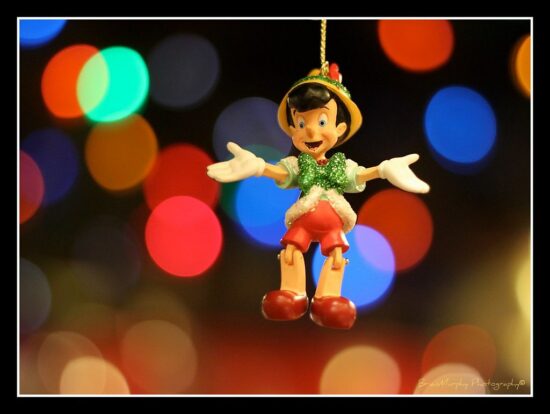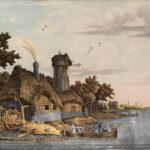Introduction
Carlo Collodi’s novel, “The Adventures of Pinocchio,” has captivated readers for generations with its enchanting story and enduring themes. This article delves into the various aspects of the novel, including its plot and storyline, characters, themes and symbols, writing style, setting and atmosphere, historical and social context, as well as its impact and reception. Through this exploration, we gain a deeper understanding of the profound impact and universal appeal of this beloved literary classic.
Plot and Storyline
“The Adventures of Pinocchio” follows the extraordinary journey of a wooden puppet named Pinocchio, who aspires to become a real boy. The story begins with the creation of Pinocchio by the kind-hearted woodcarver, Geppetto. Pinocchio’s mischievous nature and propensity for dishonesty led him into a series of perilous and often humorous situations. Along the way, he encounters a host of memorable characters, including the cunning Fox and Cat, the Blue Fairy, the Talking Cricket, and the lovable Geppetto.
The novel’s main story arc revolves around Pinocchio’s quest for self-improvement and his desire to overcome his flaws. He embarks on numerous adventures, facing challenges that test his character and moral compass. Key incidents like Pinocchio’s encounters with Mangiafuoco, the deceitful puppet master, and the perilous Land of Toys punctuate his journey. These episodes highlight the consequences of his impulsive actions and the importance of making responsible choices.
Significant twists and turns in the narrative include Pinocchio’s transformation into a donkey, his imprisonment by the Green Fisherman, and his ultimate redemption through acts of selflessness. The story culminates in Pinocchio’s ultimate realization that only through honesty, bravery, and selflessness can he achieve his dream of becoming a real boy.
Characters
“The Adventures of Pinocchio” features a rich ensemble of characters that play vital roles in the story’s development and thematic exploration. Pinocchio, the protagonist, represents the universal journey of self-discovery and personal growth. Pinocchio, who is initially impulsive and naive, gradually learns the virtues of integrity, responsibility, and compassion through his encounters and experiences.
Geppetto, Pinocchio’s creator and father figure, embodies unwavering love and patience. His unwavering belief in Pinocchio’s potential for goodness serves as a guiding force throughout the narrative. The Blue Fairy symbolizes hope, guidance, and divine intervention, offering Pinocchio a chance at redemption and transformation.
The supporting characters, such as the Talking Cricket and the Fox and Cat, serve as moral guides and cautionary figures. They provide wisdom and advice, highlighting the consequences of Pinocchio’s actions and imparting valuable life lessons.
Themes and Symbols
“The Adventures of Pinocchio” explores several profound themes that resonate with readers of all ages. One of the central themes is the transformative power of morality and personal growth. Through Pinocchio’s journey, the novel emphasizes the importance of honesty, integrity, and compassion as essential qualities for becoming a better individual.
Another significant theme is the consequences of one’s actions. Pinocchio’s misdeeds lead to hardships and suffering, underscoring the notion that every choice has repercussions. The novel also explores the theme of the pursuit of knowledge and self-discovery as Pinocchio navigates a world filled with temptation and learns the value of education and self-improvement.
Various symbols are interwoven throughout the narrative, enriching its layers of meaning. The Blue Fairy represents divine intervention and the potential for redemption. The Talking Cricket serves as Pinocchio’s conscience, reminding him of his moral obligations. The transformation of Pinocchio into a donkey symbolizes the degradation that accompanies immorality and the loss of one’s humanity.
Writing Style
Carlo Collodi’s writing style in “The Adventures of Pinocchio” is engaging and accessible, making it suitable for readers of all ages. His use of vivid imagery and descriptive language brings the characters and settings to life, allowing readers to immerse themselves fully in the story. Collodi employs a straightforward narrative structure, which enables the plot to unfold seamlessly while maintaining a sense of wonder and suspense.
The author’s incorporation of dialogue adds depth to the characters and contributes to the novel’s overall charm. Collodi’s ability to balance moments of humor and whimsy with poignant and thought-provoking scenes enhances the emotional resonance of the story. For instance, the humorous exchanges between Pinocchio and the mischievous Fox and Cat provide comic relief, while the heartfelt interactions between Pinocchio and Geppetto evoke empathy and compassion.
Setting and Atmosphere
“The Adventures of Pinocchio” is set in a vibrant and fantastical world, combining elements of reality and fantasy. The story unfolds in various locales, including Geppetto’s humble workshop, the Fairy’s abode, the eerie Land of Toys, and the treacherous Forest of the Assassins. Each setting contributes to the story’s tone and atmosphere, invoking a sense of wonder, danger, or enchantment.
The time period and cultural context in which the novel is set add to its charm and universality. Collodi draws upon elements of Italian culture, folklore, and traditions, infusing the narrative with a distinct sense of place. The vivid descriptions of the landscapes and settings transport readers into a world that feels both familiar and extraordinary.
Historical, Social, or Political Context
Carlo Collodi wrote “The Adventures of Pinocchio,” which debuted in serialized form between 1881 and 1883. Significant social and political changes in Italy are a feature of the novel’s historical setting. Collodi’s work reflects the societal shifts occurring during the late 19th century, including the transition from an agrarian economy to an industrialized society.
The novel can be seen as a reflection of the challenges and moral dilemmas faced by individuals in a rapidly changing world. Pinocchio’s encounters with deceit, temptation, and the allure of instant gratification mirror the societal issues of the time, such as urbanization, poverty, and the erosion of traditional values.
Impact and Reception
“The Adventures of Pinocchio” has had a profound impact on literature and popular culture. It has been translated into numerous languages and adapted into various forms, including stage plays, films, and animated productions. The enduring appeal of Pinocchio’s story lies in its universal themes and timeless moral lessons.
The novel has received widespread acclaim for its imaginative storytelling, memorable characters, and moral depth. It has been celebrated for its ability to entertain and educate readers of all ages, making it a beloved classic in children’s literature. The enduring popularity of Pinocchio as a character and the continued adaptations of the story attest to its cultural significance and enduring relevance.
How does Pinocchio’s transformation into a donkey symbolize the consequences of his immoral actions?
Pinocchio’s transformation into a donkey in Carlo Collodi’s “The Adventures of Pinocchio” is a powerful symbol that represents the consequences of his immoral actions. Throughout the novel, Pinocchio frequently succumbs to his impulsive and selfish tendencies, engaging in lies, disobedience, and thoughtless behavior. These actions not only harm him but also bring suffering to those around him.
When Pinocchio enters the treacherous Land of Toys, he indulges in hedonistic pleasures without considering the consequences. In this land, children are transformed into donkeys as a result of their immoral behavior. Pinocchio’s transformation is a direct reflection of the degradation that accompanies his immoral actions. It is a visual representation of the consequences that befall those who abandon their moral compass and prioritize immediate gratification over long-term well-being.
The symbolism of Pinocchio becoming a donkey serves as a cautionary tale, reminding readers of the importance of moral integrity and responsible decision-making. By losing his human form and taking on the appearance of a donkey, Pinocchio experiences the loss of his human qualities, such as reason, speech, and free will. He becomes a mere beast of burden, subjected to the whims and demands of others.
Furthermore, the transformation into a donkey highlights the loss of innocence and the corruption of character that result from immoral choices. Pinocchio’s actions have consequences not only on a physical level but also on a moral and emotional level. He must confront the consequences of his actions and learn the value of honesty, bravery, and selflessness to reverse the transformation and regain his humanity.
In this way, Pinocchio’s transformation into a donkey symbolizes the moral decay and loss of humanity that occur when one deviates from virtuous behavior. It serves as a stark reminder that our choices shape our character and that indulging in immorality can lead to profound consequences. Through this powerful symbol, Collodi reinforces the novel’s themes of personal growth, moral responsibility, and the transformative power of making virtuous choices.
Sources
The Adventures of Pinocchio – Wikipedia
The Adventures of Pinocchio | Summary, Characters, & Facts | Britannica






